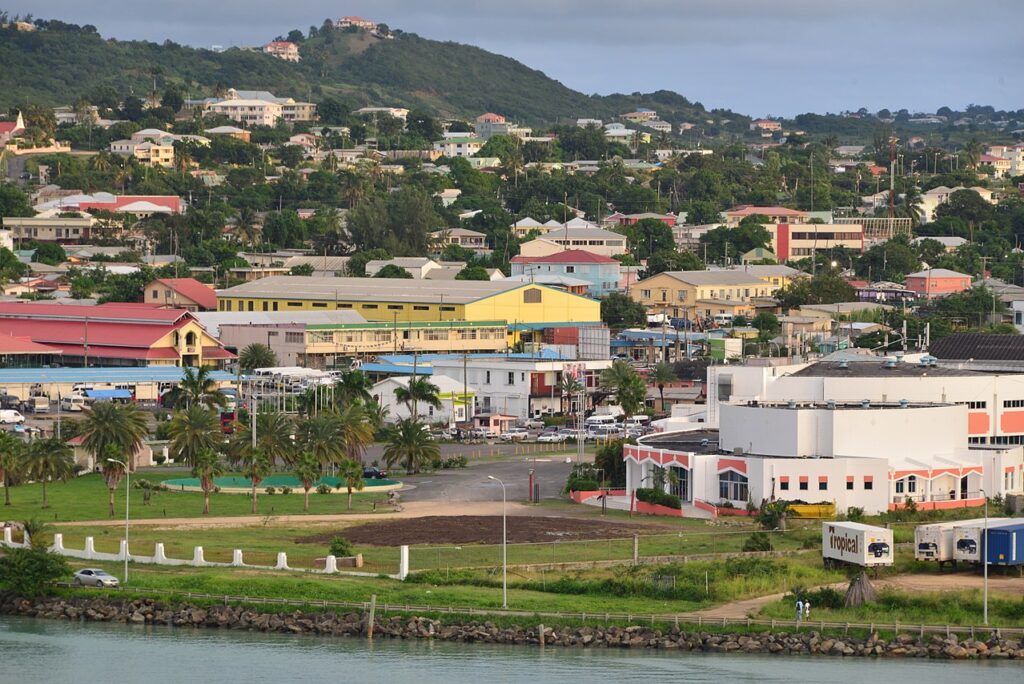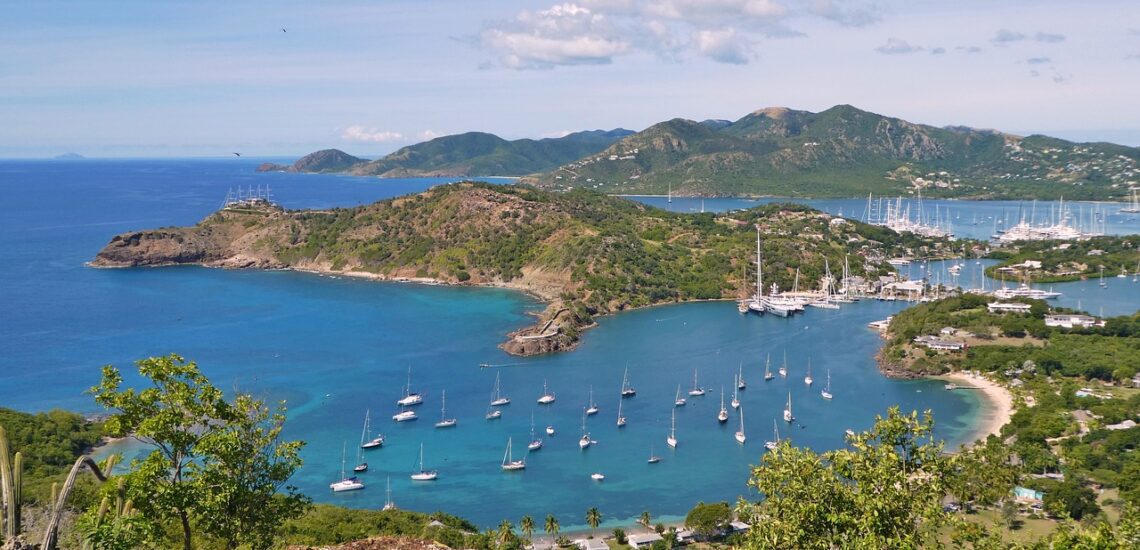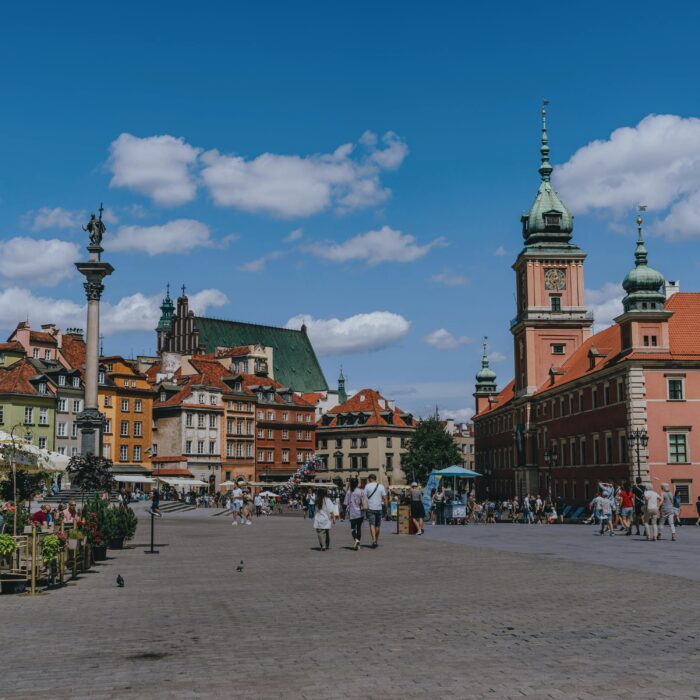Quick facts about Antigua and Barbuda:
- Population: Approximately 93,000 people.
- Capital: St. John’s.
- Official Language: English.
- Currency: Eastern Caribbean dollar (XCD).
- Government: Constitutional monarchy with a parliamentary system.
- Major Religion: Christianity.
- Geography: Antigua and Barbuda is an island nation located in the Caribbean Sea. It consists of two main islands, Antigua and Barbuda, and a number of smaller islands. The terrain is characterized by coral reefs, sandy beaches, and volcanic landscapes.
Fact 1: There are 3 islands in the country, despite the name
While the name “Antigua and Barbuda” primarily references the two largest and most prominent islands in the country, namely Antigua and Barbuda, there is a third island known as Redonda. Redonda is a small, uninhabited island located southwest of Antigua and Barbuda. Although it is not as well-known as Antigua and Barbuda, Redonda is an integral part of the nation’s territory. Antigua and Barbuda, with its three islands, offers visitors a diverse range of experiences, from the bustling streets and pristine beaches of Antigua to the rugged and unspoiled landscapes of Barbuda and Redonda.

Fact 2: There is a large colony of frigate birds in Antigua and Barbuda
Antigua and Barbuda provide an ideal habitat for frigatebirds, and the islands are home to a significant population of these seabirds. Frigatebirds are known for their impressive wingspan and their ability to snatch fish from the water while in flight. They often nest and roost in secluded areas along the coastlines of Antigua and Barbuda.
Fact 3: There are no rivers or lakes on the islands
Antigua and Barbuda, being low-lying coral islands, lack natural freshwater sources such as rivers and lakes. The islands’ topography and geology do not support the formation of permanent bodies of water. However, during periods of rainfall, temporary ponds and pools may form across the islands, providing freshwater for a limited time. These temporary water sources are crucial for sustaining vegetation and wildlife, as well as for meeting the freshwater needs of the local population. Additionally, Antigua and Barbuda rely on desalination plants and groundwater wells to supplement their freshwater supply.

Fact 4: The nation’s highest point has been renamed in honor of a U.S. president
Previously known as Boggy Peak, Mount Obama was renamed by the government of Antigua and Barbuda in recognition of Barack Obama’s historic presidency and his ancestral ties to the Caribbean region. The renaming ceremony took place on August 4, 2009, coinciding with Barack Obama’s birthday. This gesture symbolized the island nation’s admiration and appreciation for President Obama’s leadership and his significance as the first African American to hold the office of President of the United States.
Fact 5: There are hundreds of beaches in this small country
With its stunning coastline and picturesque coves, Antigua and Barbuda boasts an abundance of beautiful beaches scattered across its two main islands and smaller islets. From expansive stretches of powdery white sand to secluded, hidden gems, the beaches of Antigua and Barbuda offer something for every preference. Popular beaches include Dickenson Bay, Jolly Beach, Half Moon Bay, and Valley Church Beach on Antigua, as well as Pink Sands Beach, Darkwood Beach, and Ffryes Beach. Many of these beaches are renowned for their crystal-clear turquoise waters, pristine shores, and excellent snorkeling opportunities.
Note: If you plan to visit the country, check if you need an International Driver’s License in Antigua and Barbuda to drive.

Fact 6: Antigua and Barbuda is susceptible to hurricane damage
Situated in the hurricane-prone region of the Caribbean, Antigua and Barbuda face the risk of being affected by tropical storms and hurricanes, particularly during the Atlantic hurricane season, which typically spans from June to November each year. These powerful storms can bring strong winds, heavy rainfall, storm surges, and flooding, causing significant damage to infrastructure, homes, and natural ecosystems. Over the years, Antigua and Barbuda have experienced the impacts of various hurricanes, with some storms causing widespread destruction and disruption to daily life. The local government and communities take measures to prepare for and mitigate the impacts of hurricanes, including implementing building codes, improving disaster preparedness and response plans, and raising awareness about storm safety measures.
Fact 7: Antigua and Barbuda offer amazing diving opportunities
Antigua and Barbuda boast a wealth of dive sites, ranging from coral reefs teeming with colorful fish to shipwrecks steeped in history. The clear, warm waters surrounding the islands provide excellent visibility and comfortable conditions for divers of all levels. Popular dive sites include the Pillars of Hercules, known for its dramatic underwater rock formations and abundant marine species, and the wreck of the Andes, a sunken freighter that has become a thriving artificial reef. Divers can encounter a variety of marine life, including reef sharks, stingrays, sea turtles, and a dazzling array of tropical fish.

Fact 8: Antigua and Barbuda has one of the least smoking countries in the world
Antigua and Barbuda have prioritized public health initiatives to combat smoking, including comprehensive tobacco control laws, public education campaigns, and smoking cessation programs. These efforts have contributed to a notable decline in smoking prevalence within the country. While specific rankings regarding smoking prevalence compared to other nations may vary, Antigua and Barbuda’s commitment to tobacco control aligns with global efforts to reduce the harmful effects of smoking on public health.
Fact 9: The country’s main tourist attraction is the English dockyard
Nelson’s Dockyard, located in English Harbour, Antigua, is a UNESCO World Heritage Site and one of the best-preserved colonial naval dockyards in the Caribbean. It offers visitors a glimpse into Antigua’s maritime history, with restored buildings, museums, and sailing facilities. The dockyard complex includes historic structures, such as the Admiral’s House, Clarence House, and historic warehouses, now converted into shops, restaurants, and galleries.

Fact 10: There are pink beaches in Barbuda
Barbuda’s pink sand beaches, such as the famous Pink Sand Beach (also known as Princess Diana Beach), captivate visitors with their unique and picturesque beauty. The soft, rosy hue of the sand is a result of tiny particles of red coral broken down by waves over time, blending with the white sand to create a pinkish tint. This natural spectacle contrasts beautifully with the turquoise waters of the Caribbean Sea, making Barbuda’s beaches a must-visit destination for beach lovers and nature enthusiasts. In addition to Pink Sand Beach, other beaches on the island, such as Low Bay and Coco Point, also boast varying shades of pink sand, adding to Barbuda’s allure as a tropical paradise.

Published April 07, 2024 • 6m to read





